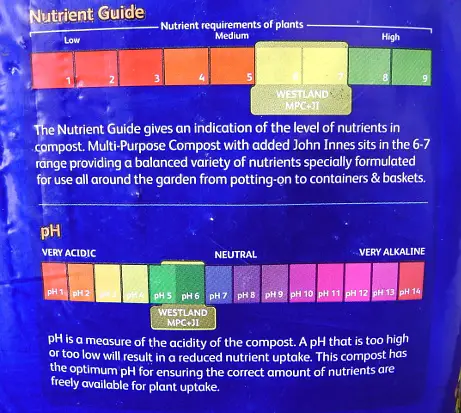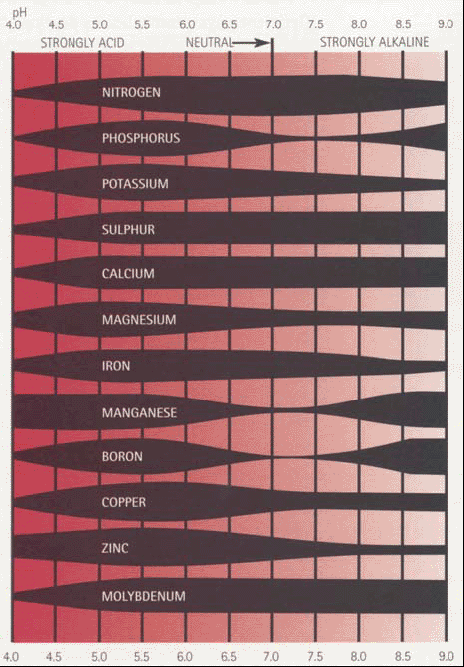pH – Its Importance for nutrient absorption
By getting the pH right, we can make sure that our plants absorb all the nutrients they need.
If the pH is too high or too low, growing in soil or other media, our plants will be unable to absorb crucial nutrients and that will affect growth.
pH of Soil
In a bag of multi-purpose compost, or any other bag of soil for that matter, there is usually a mix of both low and high pH elements.
Peat has a low pH and dolomite lime is high. By adding both, the soil becomes “buffered” and the pH is balanced somewhere in the middle. Hopefully around 6.8 for tomatoes growing in soil.

We don’t have to worry too much about the pH when growing tomatoes in soil, because we know that it contains a mix of elements to keep the pH balanced.
pH In Other Media
When growing in other media such as perlite, coconut coir etc., the pH of the water we use, after the nutrients have been added, becomes crucial, if our plants are going to be able to absorb all the nutrients they need.
This is when we need to know, more or less, the pH of our tap water if we are going to be able to feed our plants successfully.

Perlite, coir and other non-soil media are not buffered, so wide swings outside the range of pH at which our plants can absorb nutrients, would mean that they starve and become nutrient deficient.
The ideal pH for growing in media such as perlite, coir and rockwool etc., is between 6.2 and 6.5.
A slight swing above or below is beneficial because that will help absorb nutrients on the edge of our pH window.
This graph gives an idea of the nutrients available at different pH levels.

If you are following along with the “Hydroponic Grow Along” you will be able to reduce the pH of your tap water to the right levels – between 6.2 and 6.5 by adding lemon juice.
Here is my estimation of drops needed per half litre (500ml) for each of the three areas of water hardness in England and Wales. In Scotland, please visit this link to enter your postcode: http://www.scottishwater.co.uk/you-and-your-home/water-quality/waterqualitysearch. Outside of this area, please Google “water pH of your area”.
- Soft to moderately soft – no drops necessary
- Medium to hard – 6 drops of lemon juice per half litre
- Hard to very hard – 12 drops of lemon juice per half litre
These are rough, estimated amounts, but they will get us started in the right direction, and we can adjust accordingly as we go.
If you have sown before adjusting the pH of your tap water, it won’t matter at the moment, because we can adjust it as we water our seedlings.

Conor
Hi Nick,
I am going to use rainwater this year in my autopots – I have pH up and down mixes and a pH meter. I am hoping that there will be enough buffering capacity to keep the pH in the right range without drifting.
Conor
Nick
Hi Conor,
The pH meter is really useful – do you have an EC meter too? As you probably already know, the EC meter measures the nutrient strength.